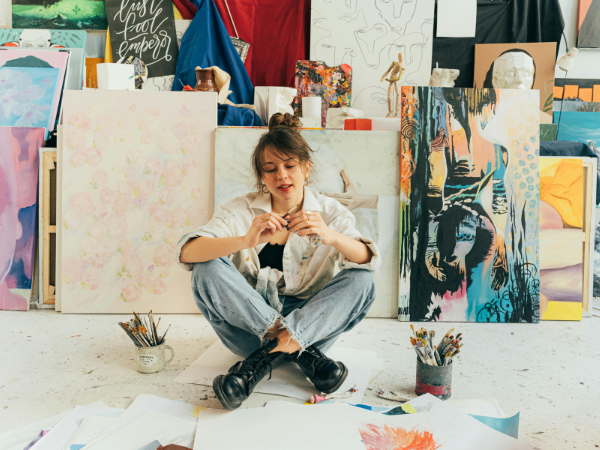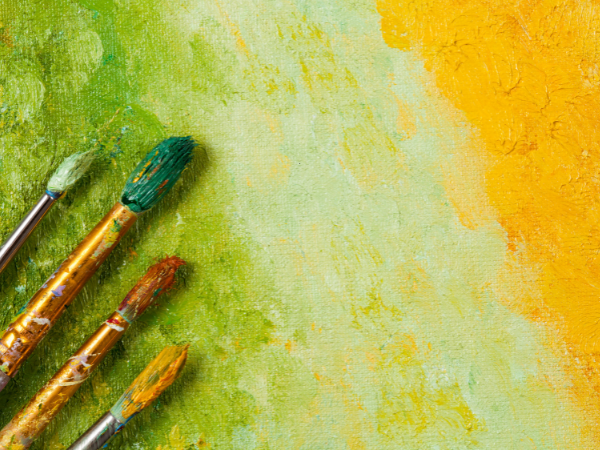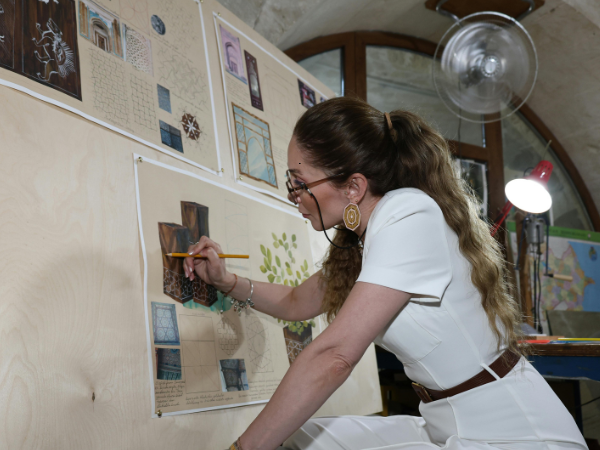This article is made just for you. Inside, you’ll discover simple, smart tips to help you sketch faster and smarter. These tricks will boost your creativity, save your time, and keep your passion alive—even on your busiest days.
Efficient Sketching Tools
Efficient sketching tools help busy artists save time and boost creativity. Using the right tools reduces frustration and speeds up the drawing process. Choosing materials that fit your style and workflow makes sketching easier. Whether you prefer digital or traditional methods, the right tools can improve your results.
Choosing The Right Materials
Selecting the right materials is essential for smooth and quick sketching. Good materials support your drawing style and avoid wasting time on poor tools. Here are some tips for choosing materials:
- Pencils: Choose a range of hardness, such as 2B for shading and HB for lines.
- Paper: Use smooth paper for detailed work and textured paper for rough sketches.
- Erasers: Kneaded erasers work well for light corrections and precision erasers for sharp lines.
- Sharpeners: A quality sharpener keeps pencils ready and saves time.
Here is a simple comparison table to help select materials:
| Material | Best For | Time-Saving Benefit |
|---|---|---|
| 2B Pencil | Shading and soft lines | Quick tonal sketching |
| HB Pencil | Outlines and details | Clear, fast line work |
| Smooth Paper | Fine details | Less smudging, faster drawing |
| Kneaded Eraser | Light corrections | Adjusts tones without damage |
Choosing the right tools reduces interruptions and helps keep your flow. Test different materials to find what suits your needs best.
Digital Vs. Traditional Tools
Both digital and traditional tools have strengths for busy artists. Understanding their benefits helps pick the best option for your workflow. Digital tools offer speed and flexibility. Traditional tools provide a tactile feel and simplicity.
Digital tools advantages:
- Undo and redo options save time on mistakes.
- Layers allow easy changes and experimentation.
- Wide range of brushes and effects at your fingertips.
- Fast sharing and storage of sketches.
Traditional tools advantages:
- No batteries or software updates needed.
- Simple setup with minimal distractions.
- Natural hand-eye connection improves skill.
- Easy to carry and use anywhere.
Here is a quick comparison of key points:
| Feature | Digital Tools | Traditional Tools |
|---|---|---|
| Flexibility | High, with layers and effects | Limited to physical media |
| Portability | Depends on device size | Lightweight and easy |
| Setup Time | Medium, device and app needed | Low, just grab tools |
| Error Correction | Instant undo | Manual erasing |
Choose digital for fast edits and variety. Pick traditional for simplicity and tactile feedback. Many artists use both to suit different needs.

Portable Kits For On-the-go
Portable sketch kits keep tools handy and organized for busy artists on the move. A well-packed kit saves time searching for supplies. It also encourages frequent sketching during travel or breaks.
Basic items for a portable kit include:
- Compact sketchbook or pad
- Mechanical pencil or small pencil set
- Mini eraser and sharpener
- Pen or fine liner for quick lines
- Small ruler or stencil (optional)
Consider a lightweight pouch or case to keep items secure. Look for water-resistant materials if you sketch outdoors often.
Here are tips to build an effective on-the-go kit:
- Limit tools to essentials to keep weight low.
- Choose multi-use items like pencils with built-in erasers.
- Organize by frequency of use for easy access.
- Include a small cloth to clean tools or hands.
Portable kits make sketching possible anytime inspiration strikes. They help maintain a creative habit without much effort.
Streamlining Your Workflow
Streamlining your workflow is essential for busy artists who want to make the most of their sketching time. Efficient habits reduce wasted moments and help maintain focus. Simple changes in your daily routine can lead to faster, better sketches without extra effort.
Setting Up A Dedicated Space
Having a dedicated sketching space helps you stay organized and focused. Choose a quiet corner or small area where you keep all your art supplies. This saves time searching for tools and materials before starting.
Key tips for setting up your space:
- Keep essentials within reach: Pencils, erasers, sketchbooks, and sharpeners should be close by.
- Use storage solutions: Small containers or drawers keep supplies tidy and easy to find.
- Good lighting: Natural light or a bright lamp reduces eye strain and improves sketch quality.
- Comfortable seating: A supportive chair helps maintain good posture during long sessions.
Here’s a simple table to organize your sketch space setup:
| Item | Purpose | Suggested Placement |
|---|---|---|
| Sketchbooks | For drawing practice and ideas | Desk surface or a nearby shelf |
| Pencils and Pens | Primary sketching tools | Pen holder on the desk |
| Erasers and Sharpeners | Tool maintenance and corrections | Small container within arm’s reach |
| Lighting | Clear visibility and eye comfort | Desk lamp or near window |
Setting a dedicated space encourages regular sketching habits. It also reduces setup and cleanup time. This simple change improves your overall workflow.
Batch Sketching Techniques
Batch sketching means creating multiple sketches in one session. This method saves time by keeping your mind focused on similar tasks. Instead of switching between ideas, you complete several sketches with related subjects or styles.
Benefits of batch sketching:
- Improves speed and confidence
- Makes it easier to spot patterns and mistakes
- Reduces decision fatigue by limiting topic changes
- Builds momentum and creative flow
Try these batch sketching approaches:
- Theme batches: Draw five or more sketches around one theme, like plants, faces, or objects.
- Technique batches: Focus on one technique such as shading, line work, or textures.
- Time batches: Set a timer for 10–15 minutes and sketch as many quick studies as possible.
Batch sketching fits well with a dedicated space. Prepare your tools once and work on multiple ideas without interruption. This method helps busy artists keep consistent progress in less time.
Time Management Strategies
Time management strategies help artists focus on what matters most. These strategies reduce stress and boost creativity by organizing tasks and setting clear limits. Sketching often gets pushed aside by daily chores and work. Using smart time management keeps sketching a regular part of your routine without feeling overwhelmed.
Prioritizing Sketch Ideas
Not all sketch ideas need the same attention. Prioritizing helps you focus on sketches that bring the most value. Start by listing all your ideas. Then, sort them by importance or urgency. This way, you spend time on sketches that inspire you or fit your current goals.
Use a simple table to rank your ideas:
| Sketch Idea | Urgency | Inspiration Level | Priority Score |
|---|---|---|---|
| Portrait Practice | High | Medium | 8 |
| Landscape Sketch | Low | High | 6 |
| Character Design | Medium | High | 9 |
Use a priority score by adding urgency and inspiration levels. Numbers can be 1–5. Focus first on ideas with the highest scores.
- Write down all sketch ideas.
- Give each idea a score for urgency and inspiration.
- Calculate priority score (urgency + inspiration).
- Work on top-scoring sketches first.
This method helps avoid wasting time on less important sketches. It also keeps your creative energy focused and productive.
Time-boxing Practice Sessions
Time-boxing means setting a fixed time for sketching. It creates clear limits and stops you from spending too long on one piece. This method keeps your practice focused and efficient.
Use a timer or alarm to stick to your time box. For example, set 30 minutes for a sketch. When time is up, stop and move on. This keeps your mind fresh and prevents burnout.
Benefits of time-boxing:
- Improves focus by creating a clear start and end.
- Builds a habit by scheduling regular practice times.
- Prevents perfectionism that wastes time.
- Encourages quick decision-making and creativity.
Try different time slots to find what works best. Some artists prefer short 15-minute bursts; others work well with 1-hour sessions.
Example time-boxing schedule:
| Time | Activity | Duration |
|---|---|---|
| 7:00 AM | Warm-up sketches | 15 minutes |
| 7:15 AM | Main sketch project | 30 minutes |
| 7:45 AM | Review and notes | 15 minutes |
Time-boxing helps busy artists make the most of limited sketching time. It turns practice into a focused, stress-free habit.
Quick Techniques To Enhance Speed
Speed matters for busy artists. Sketching quickly saves time and keeps creativity flowing. Learning fast sketching techniques helps capture ideas before they vanish. Quick methods focus on essential shapes and movement. These tips make drawing less stressful and more productive.
Gesture Drawing Basics
Gesture drawing is the art of capturing the movement and action of a subject. It focuses on the overall flow, not details. This method helps artists draw faster and with more energy. Gesture sketches usually take 30 seconds to 2 minutes.
Key points of gesture drawing:
- Use loose, flowing lines to show motion.
- Draw quickly to catch the pose.
- Ignore details like facial features or clothing.
- Focus on the line of action—the main curve of the body.
- Keep your hand relaxed and move your whole arm.
Practice gesture drawing with a timer. Set short intervals like 30 seconds or 1 minute per sketch. Try drawing different poses in quick succession. This trains your eye and hand to work faster.
| Time Limit | Goal | Focus |
|---|---|---|
| 30 seconds | Capture basic pose | Line of action and movement |
| 1 minute | Define major shapes | Body mass and gesture flow |
| 2 minutes | Add simple volume | Basic structure without details |
Gesture drawing builds confidence and speed. It trains you to see the essence of your subject fast. Try it daily to improve your sketching pace.
Simplifying Complex Forms
Complex objects can slow down your sketching. Breaking them into simple shapes speeds up the process. Simplification helps focus on the important parts and avoid getting stuck.
How to simplify complex forms:
- Identify basic shapes like circles, squares, and triangles.
- Break the subject into these simple shapes.
- Connect shapes with smooth lines to build form.
- Ignore small details at first.
- Use light lines to adjust shapes quickly.
For example, a human head can be simplified as:
- A circle for the cranium
- A triangle or oval for the jaw
- Lines for the center and eye line
This method saves time and helps with proportions. It also makes adding details easier later.
| Complex Form | Simple Shapes | Purpose |
|---|---|---|
| Human Body | Ovals, cylinders, rectangles | Capture volume and pose |
| Car | Rectangles and circles | Define body and wheels |
| Tree | Triangles and ovals | Show foliage and trunk |
Simplifying forms reduces hesitation. It allows faster sketching and better structure. Practice breaking objects down quickly before adding details.
Leveraging Technology
Technology can save artists a lot of time. It helps create sketches faster and keeps ideas organized. Using the right tools lets artists focus more on drawing and less on fixing mistakes or searching for materials. Busy artists can benefit from digital tools that improve efficiency and creativity.
Apps For Sketching And Organization
Several apps help artists draw and manage their work efficiently. These apps offer features like digital brushes, color palettes, and cloud storage. They allow artists to sketch anywhere and keep all drawings in one place. Some apps also include tools to organize ideas and plan projects.
- Procreate: A popular app with many brushes and smooth performance.
- Adobe Fresco: Combines vector and raster drawing with easy sharing options.
- Autodesk SketchBook: Free app with a clean interface and professional tools.
- Notion or Evernote: Great for organizing sketches, notes, and project ideas.
Using these apps can save time on setup and cleanup. They reduce paper waste and make it easy to edit sketches. Artists can tag and sort their work for quick access later. Keeping everything digital means no lost papers or missed ideas.
Using Layers And Undo Features
Layers help artists work on different parts of a sketch without changing the whole drawing. This saves time by allowing easy edits and adjustments. Artists can add, hide, or move layers to see changes clearly. Undo features let artists fix mistakes quickly without starting over.
Working with layers and undo tools reduces stress. It allows more freedom to experiment with ideas. Artists can try new colors, shapes, or styles without fear of ruining the sketch.
- Create separate layers for outlines, colors, and details.
- Use the undo button to quickly fix errors or try different options.
- Group layers to keep the workspace tidy and organized.
- Lock layersto avoid accidental changes.
Most digital sketch apps include these features. They help reduce the time spent on corrections. These tools also improve the quality of the final artwork by making the process smoother and more flexible.




